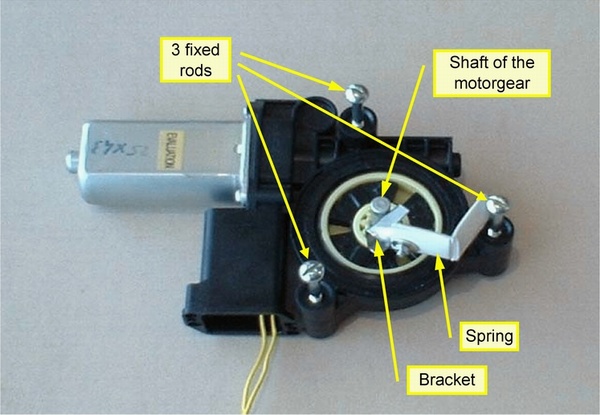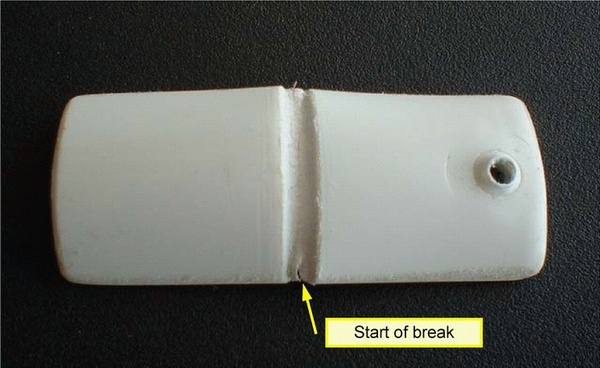| PURPOSE: |
To
measure the duration of the spring to repeated flexures. |
| TEST
SAMPLE: |
A
plastic spring with film hinge, having the following characteristics:
-
material:
PVC
-
film hinge:
made by tooling a piece of pipe
-
lenght:
50 mm
-
thickness:
2 mm
-
radius
of curvature: 15 mm
-
arc of
the curved shape: 95°
-
angle
of flexure: 90°
|
| TEST
FIXTURE: |
The
spring was mounted on a motorgear as follows:
-
one arm
was fixed to a bracket fixed to the rotating shaft of the motorgear
-
the other
arm, at each rotation, strikes 3 fixed rods, which flex the spring at 90°
The shaft
of the motorgear rotatesdat 1.2 rps (4,320 rph) and the spring was flexed
3.6 times per second (12,960 cycles per hour).
After
each flexure, the spring desengaged itself from the rod and freely returns
towards its rest position.

|
| TEST
TEMPERATURE: |
Room
temperature (25°C) |
| TEST
RESULTS: |
The
test was halted at the end of every hour, to inspect the conditions of
the spring, and the following was observed:
|
Test
duration (h)
|
Flexures
(n)
|
| No
wear |
19
h
|
246,000
|
| Start
of anomalous stretching |
20
h
|
259,000
|
| Start
of break (see picture) |
24
h
|
311,000
|

|
| COMMENTS
AND CONCLUSIONS: |
The
spring is suited to applications wherein resistance to a large number of
flexures is required.
The
effective duration of the spring win surely be longer than resulting
from the test, since:
-
The stress
of the spring generated in the test il larger than a simple flexure, since,
after every flexure, the spring desengages itself and suddenly returns
towards its rest position, undergoing a fast counter-flexure in the opposite
direction.
-
A mould
injected spring would last surely longer than the sample, since::
-
the polymer
chains in the area of the sample's film hinge were randomly oriented, while
in a mould injected spring, the flux of the meterial through the film hinge
would orient them perpendicularly to the film hinge, making it much more
resistant to flexure;
-
the polymer
chains in the area of the sample's film hinge were broken by mechanical
tooling..
|

|

